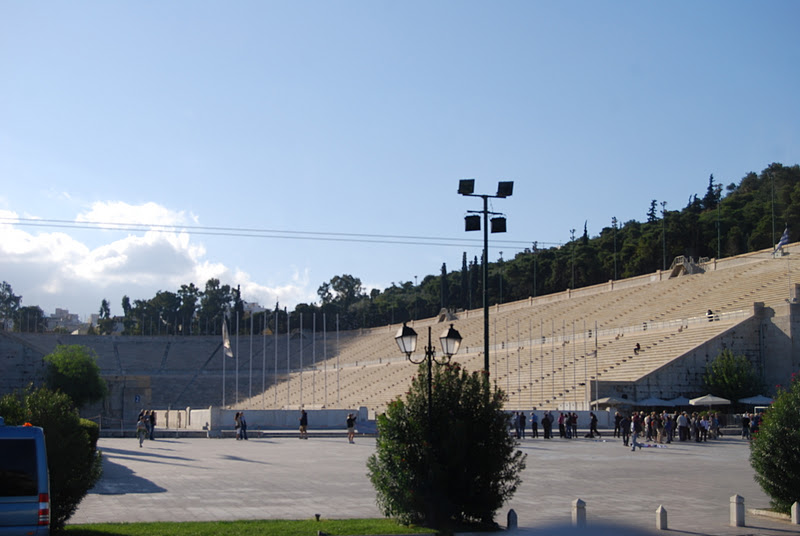We woke up and showered early and had breakfast. Then we met for our tour excursion to "The Parthenon" acropolis.
 |
| This is part of the Greek Acropolis and just above this wall is the one of the famous wonders of the world "The Parthenon" |
 |
| Hi to everyone from Athens Greece. |
 |
| Marble steps leading to many of the archaelolgical exhibits. |
 |
| The marble steps were smooth to touch. |
 |
| Looking over the "Agora" of Athens. |
 |
| I am walking up the stairs to the upper Acropolis in Athens. |
 |
| Today you can climb the sacred rock via a very old uphill slope through the ruins of the large external scale added by the Romans. |
 |
| walking through these pillars on our way up the mountain to the upper level of the Acropolis to the Parthenon. |
 |
| Add caption |
 |
| View from the back of the Dionysus theatre. In the fore ground is the entrance area and walk to the upper Acropolis towards the Parthenon. |
 |
| The ground around the Parthenon was very rough and hard to walk on. |
 |
| greek writings |
 |
| Temple of Erechtheion |
 |
| Parthenon |
 |
| A fire had destroyed much of the Parthenon and it is continuing to be restored. |
 |
| pictures of Bill and I around and in front of the temple of Erechtheion |
 |
| another picture of the temple Erechtheion |
 |
| Roman columns in Greece |
 |
| The Greece flag. this was a look out point for tourists to enjoy. |
 |
| Dad and I in front of the Parthenon one of the 7 wonders of the ancient world. |
 |
| The Parthenon |
 |
| Looking down into the city of Athens from the hill where the Parthenon is located. You can see the city of Athens (the Agora). |
 |
| taking a break from our little hike up to the Parthenon. |
 |
| It was very windy at the top of the Acropolis, plus I was having a bad hair day since I had no hair products (They were taken from my luggage from our trip from Paris to Rome) |
 |
| There were alot of tourist today while we were visiting Athens Greece. The Restoration of the Parthenon in the background. |
 |
| looking down the trail in which we were walking up to the Acropolis, the theatre is in the background. Tour guides explaining the area to their groups of tourists. |
 |
| Bill and I on our way up to the upper acropolis |
 |
| We were told that many celebrities have been to this theatre "Dionysus" to perform. One famous opera singer recently Andrea Bocelli. |
 |
| Roman bath area |
 |
| Some young Greek boys playing the accordian as we started our tour up to see the Parthenon. |
 |
| As we were driving to see the Parthenon we took alot of pictures of different architecture of the Roman and Greek eras. |
 |
| The Monument to the Unknown Soldier guarded by the Evzones, dressed in the national costume. |
 |
| Greek Basilica |
 |
| Art and Statues. |
 |
| This was a particularly strange statue. |
 |
| This is where the Atheletes would start their races. "ON YOUR MARK, GET SET, GOOOOOO!!! |
 |
| walking under the entrance bridge to the big open field. |
 |
| This is the entrance to the Altis where the athletes would compete in this grand field. |
 |
| They used shells and mud to make some of their pillars and buildings. |
 |
| Our tour guide is pointing out on the map the area of Olympia Greece, we did a waling tour. |
 |
| here we are passing the Island of Sicily Spain. |
We woke up and showered early and had breakfast. Then we met for our tour excursion to "The Parthenon" acropolis.






























